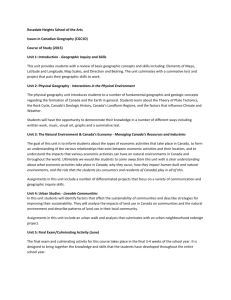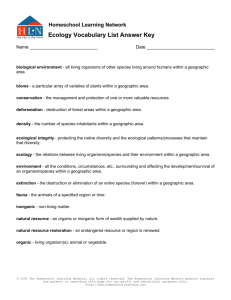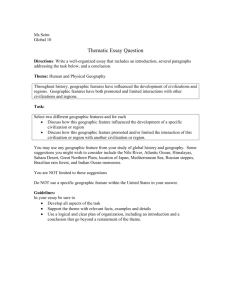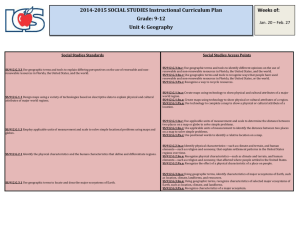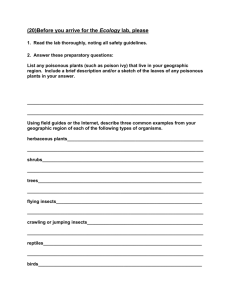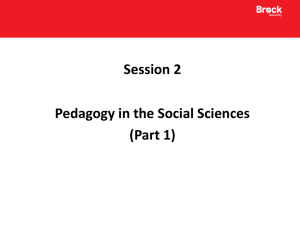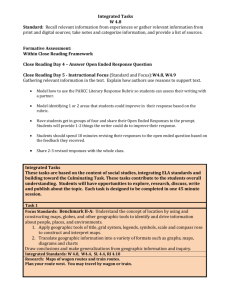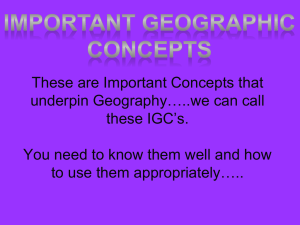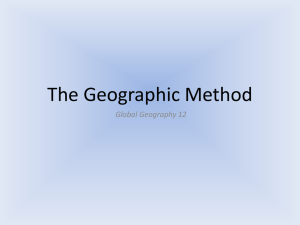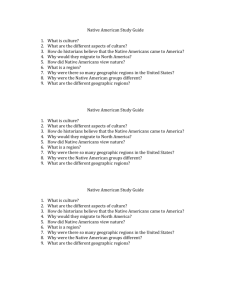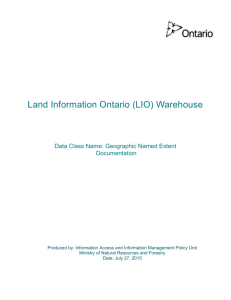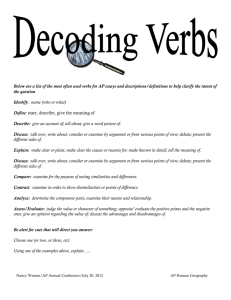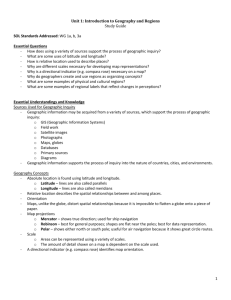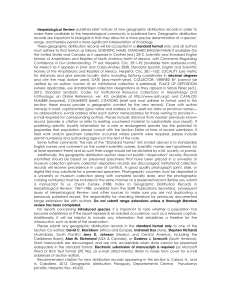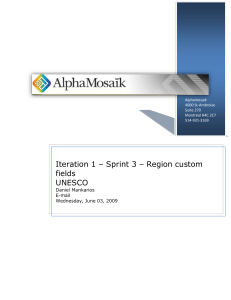The Geographic Inquiry Model
advertisement
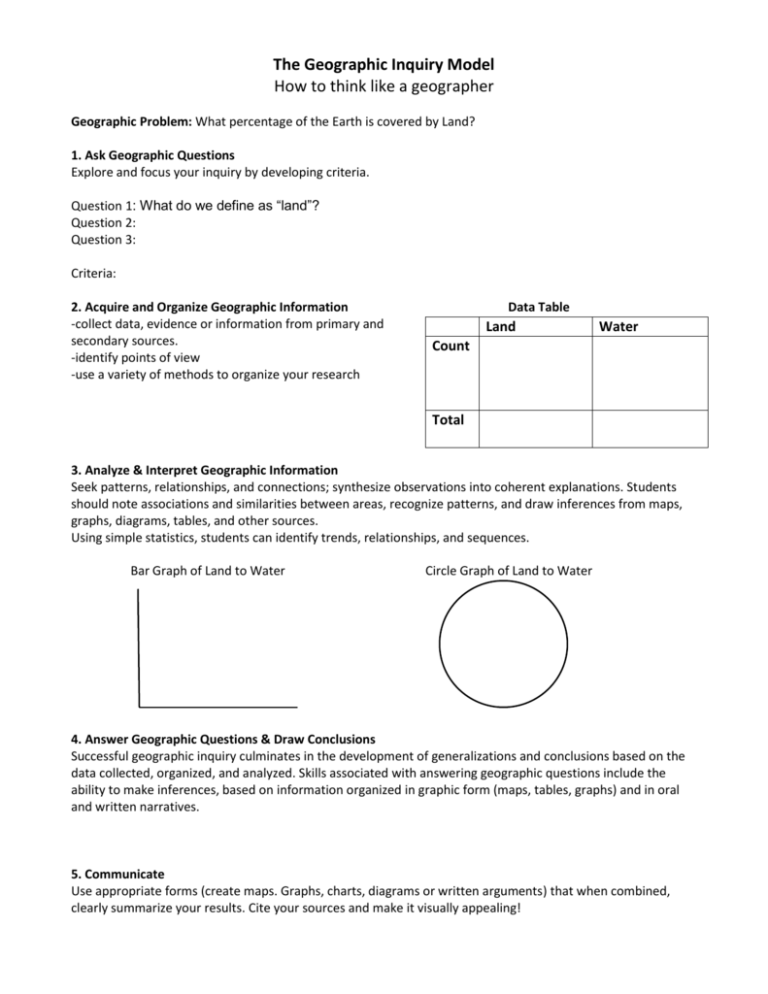
The Geographic Inquiry Model How to think like a geographer Geographic Problem: What percentage of the Earth is covered by Land? 1. Ask Geographic Questions Explore and focus your inquiry by developing criteria. Question 1: What do we define as “land”? Question 2: Question 3: Criteria: 2. Acquire and Organize Geographic Information -collect data, evidence or information from primary and secondary sources. -identify points of view -use a variety of methods to organize your research Data Table Land Water Count Total 3. Analyze & Interpret Geographic Information Seek patterns, relationships, and connections; synthesize observations into coherent explanations. Students should note associations and similarities between areas, recognize patterns, and draw inferences from maps, graphs, diagrams, tables, and other sources. Using simple statistics, students can identify trends, relationships, and sequences. Bar Graph of Land to Water Circle Graph of Land to Water 4. Answer Geographic Questions & Draw Conclusions Successful geographic inquiry culminates in the development of generalizations and conclusions based on the data collected, organized, and analyzed. Skills associated with answering geographic questions include the ability to make inferences, based on information organized in graphic form (maps, tables, graphs) and in oral and written narratives. 5. Communicate Use appropriate forms (create maps. Graphs, charts, diagrams or written arguments) that when combined, clearly summarize your results. Cite your sources and make it visually appealing!
